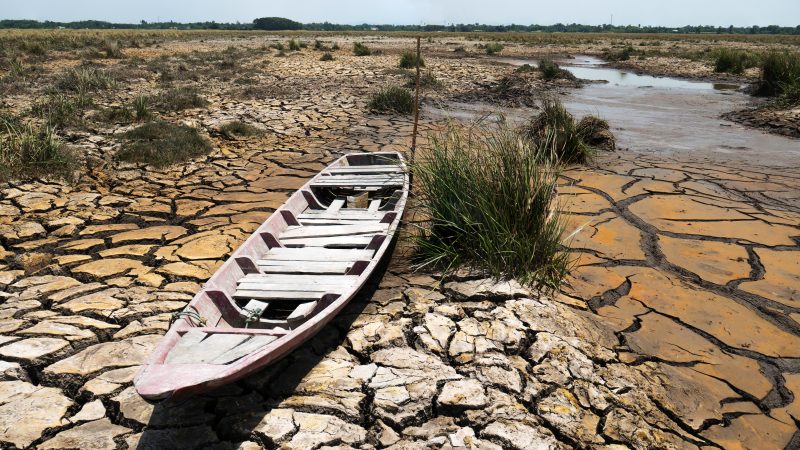Protection for Climate Refugees Requires Creativity and Persistence
By Erin Beidler | Head Notes Editor
November 13, 2023
—
The United Nations estimates that by the year 2050 climate change will have displaced around 200 million people globally.[1] Since 2010, about 23 million people per year have been displaced, mostly within their own countries.[2] Displacement is caused by sudden-onset disasters like flooding, windstorms, and earthquakes as well as slow-onset disasters like desertification and rising sea levels.[3] Climate change also deeply impacts already vulnerable communities by exacerbating existing social, political, and economic tensions.[4]
The plight of climate refugees is valid and imminent. However, no nation currently offers legal protections to refugees solely on the basis of climate change.[5] According to the 1951 U.N. Convention Relating to the Status of Refugees, a refugee is “a person who has crossed an international border owing to well-founded fear of being persecuted for reasons of race, religion, nationality, membership of a particular social group or political opinion.”[6] This definition assumes that a person is being persecuted by another human being on the basis of one of the listed protected categories.[7] However, what if the persecutor is climate change? The link between the harm suffered and the intent of the actor becomes complicated when that actor is not human. The immigration framework provided by the 1951 Convention does not account for the unique challenge faced by climate refugees. As a result, it is especially difficult for climate refugees to qualify for protection in many receiving countries.
There is reason for hope. The White House, in a report released in October 2021, states that it seeks to “identify ways to apply existing protection frameworks in the context of climate-change related displacement and to identify gaps where the United States should forge new legal pathways to protection.”[8] This acknowledgement of the need for specific protection of climate refugees by the U.S. is encouraging. However, until there are formal protections in place it will take creative approaches by advocates and practitioners to support and protect those displaced by climate change.
One approach is focusing on the ways in which climate change interacts with other socio-economic or political factors that drive displacement. Climate is often considered a “threat-multiplier” in that it exacerbates existing adverse conditions.[9] For example, disasters such as drought cause the depletion of natural resources in rural areas, which causes people to migrate to urban areas in search of jobs and services.[10] Resulting tensions due to limited job opportunities and high population density can lead to increased conflict.[11] This can be particularly risky for groups who are already vulnerable and marginalized within a community or state. An argument for protection may be made if a person can prove that they were impacted by human-caused persecution that has been exacerbated by climate disasters.
A second approach focuses on how climate change can affect the right to life. The United Nations Human Rights Committee considered this possibility in the case of Teitiota vs. New Zealand.[12] The Committee, in its opinion, emphasized that environmental degradation is one of the most serious threats to the future generation’s right to life.[13] Accordingly, the Committee found that in cases where a person displaced by climate change faces a “serious” risk of harm they may be protected under the Refugee Convention, even if the harm arises from environmental factors instead of human-caused injury.[14] This holding is groundbreaking because it formally recognizes, for one of the first times on an international stage, that environmental degradation can violate a person’s right to life and can trigger obligations for protection of displaced persons as a result.
Ideally, in the near future, there will be legal protections specifically for persons displaced by climate change. However, until these protections are in place it will require the persistence and creativity of practitioners and advocates to find ways to use existing pathways to protect the rights and wellbeing of climate refugees.
[1] Julie Watson, Biden Considers Protections for Climate Refugees, PBS (Apr. 20, 2021), https://www.pbs.org/newshour/politics/biden-considers-protections-for-climate-refugees.
[2] Id.
[3] A State-Led Initiative Working Towards Better Protection for People Displaced Across Borders in the Context of Disasters and Climate Change, Platform on Disaster Displacement 12, https://disasterdisplacement.org/wp-content/uploads/2019/10/20102019_FINAL_EN_LEAFLET_SCREEN_compressed.pdf (last visited Nov. 6, 2023).
[4] The Facts: How Climate Change Affects People Living in Poverty, Mercy Corps (Apr. 08, 2021), https://www.mercycorps.org/blog/climate-change-poverty#:~:text=Floods%20and%20droughts%20brought%20on,change%20in%20the%2021st%20century.
[5] Watson, supra note 1.
[6].What We Do: Climate Change and Disaster Displacement, UNHCR, https://www.unhcr.org/what-we-do/build-better-futures/environment-disasters-and-climate-change/climate-change-and (last visited Nov. 6, 2023).
[7] Roger Zetter, The Role of Legal and Normative Frameworks for the Protection of Environmentally Displaced People, in Migration, Environment and Climate Change: Assessing the Evidence 385, 397 (Frank Lazcko & Christine Aghazarm eds., 2009).
[8] Report on the Impact of Climate Change on Migration, White House 17 (Oct. 2021), https://www.whitehouse.gov/wp-content/uploads/2021/10/Report-on-the-Impact-of-Climate-Change-on-Migration.pdf.
[9] Sara Vigil et al., Exploring the Environment-Conflict-Migration Nexus in Asia 2 (Marion Davis ed. 2022).
[10] Id. at 7.
[11] Id.
[12] See Mari Galloway, Teitiota v New Zealand, Climate Migration and Non-Refoulement: A Case Study of Canada’s Obligations Under the Charter and the ICCPR, 45 Dalhousie L.J. 385, 388 (2022).
[13] Id. at 10.
[14] Id. at 7–8.

